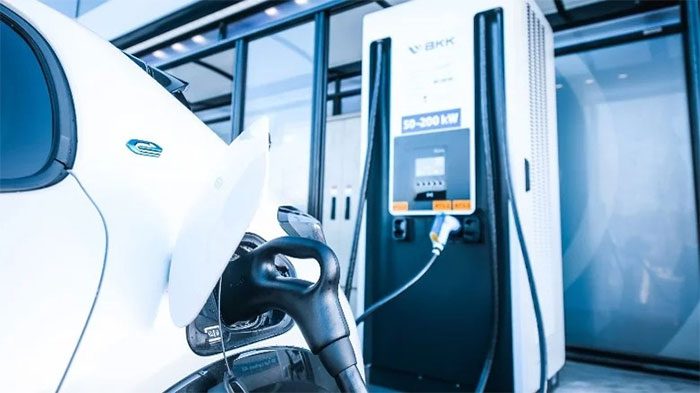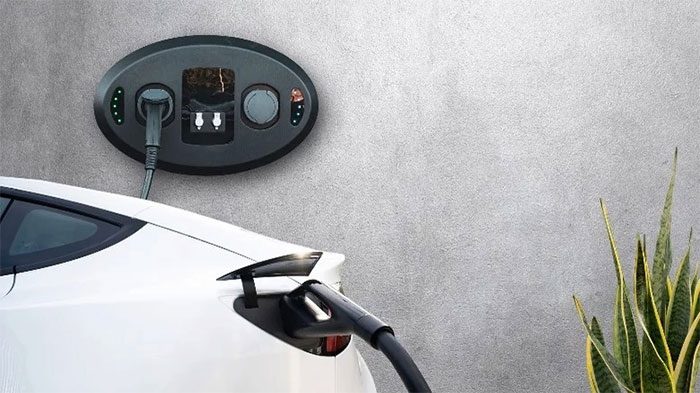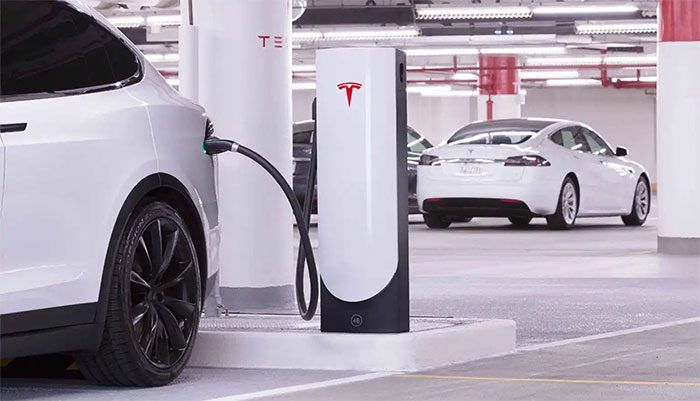The charger determines the charging speed for electric vehicles, but they are not all the same type.
If you are looking to purchase an electric vehicle, especially if you plan to install a charger at home, the first important thing to know is what the specifications of the electric vehicle charging process mean.
However, before diving into the specifications, you should first understand how to measure charging speeds. These important units are measured in kilowatts (kW), which indicate the charging speed, and kilowatt-hours (kWh), which specify the amount of battery that can be charged.
For instance, consider a vehicle with a 10 kWh battery. When connected to a 1 kW charger, that vehicle will take 10 hours to charge to 100%. However, if you use a 5 kW charger, the time will be halved, allowing you to fully charge the battery in 5 hours. With a 10 kW charger, you can fully charge the battery in just one hour.
However, things are not entirely that simple, especially when it comes to fast charging. When the battery capacity is near 0%, it will charge at or close to the full rated speed, but as it approaches full capacity, the charging process will slow down to protect the battery. This adjusted speed typically begins at around 80% capacity. At a basic level, charging speeds can be divided into two types: home charging based on AC (alternating current) and ultra-fast charging using DCFC (direct current fast charging) provided by public charging networks, such as Tesla’s Supercharger.

At a basic level, charging speeds can be divided into two types.
The Fastest Electric Vehicles with DC Fast Chargers
DC fast charging (DCFC), also known as Level 3 charging or simply DC fast charging, is the fastest way to charge electric vehicle batteries available today, with power ranging from 50 kW to 350 kW. However, not all DC fast chargers are created equal. While all DC fast chargers can be found at public charging stations, some systems within this network charge faster than others.
Even when looking at a single charging provider, you will often see different DCFC charging levels, for example, a 150 kW DC fast charger alongside a 350 kW ultra-fast charger. Tesla Superchargers are another form of DCFC, although they only support charging at a maximum power of 250 kW.
A drawback of DCFC is their location limitations. Because ultra-fast chargers require a direct connection to the power grid and consume a significant amount of electricity, DCFC stations can only be installed as public charging stations and are not suitable for home charging. Therefore, if you want to charge an electric vehicle at home or elsewhere, people are often limited to AC options.
 DCFC stations can only be installed as public charging stations and are not suitable for home charging.
DCFC stations can only be installed as public charging stations and are not suitable for home charging.
AC Chargers Require Patience
Level 1 charging involves using standard household electricity that most electronic devices plug into. In many countries, the voltage used for households is usually AC 220V-240V. A few countries use AC 110V-120V.
Level 2 charging uses an AC input voltage of 240V through a dedicated charger, with power levels ranging from 11-12 kW. Level 2 chargers are also quite common, found at public charging stations in rest areas, apartment garages, and office buildings.
However, both professionally installed Level 2 chargers and Level 1 chargers that you install at home have serious limitations regarding the current and voltage that can be drawn from the power grid. Since AC chargers provide the vehicle with alternating current, the process of converting to direct current is handed over to the vehicle’s integrated charging circuit, as batteries can only accept direct current (DC).
Level 1 AC charging uses a standard 120-volt AC power adapter and can be used on regular power grids. Unfortunately, the low voltage and current also mean that these chargers are as slow as a turtle, with a maximum of about 1 kW and taking up to 50 hours to fully charge a 60 kWh battery. The advantage of these low-power AC chargers is their compact size, allowing you to keep them inside the vehicle and use them as an emergency charger. Their plug design allows access to any wall outlet.
Meanwhile, Level 2 AC chargers can charge indoors using 208 or 240-volt circuits and can produce currents of up to 80 Amps, providing your vehicle with charging speeds from 7 to 19 kW and can fully charge a 60 kWh battery in 4 to 10 hours, depending on the type of charger and the charging hardware in the vehicle. This may be sufficient for those who only drive to work in the morning and return home in the evening, as the vehicle can be plugged in to charge overnight.

DCFC stations can provide direct current up to 350 kW for vehicles.
Why Do Electric Vehicles Charge Faster at DC Charging Stations?
DCFC stations can provide direct current up to 350 kW for your vehicle thanks to a three-phase connection to the power grid, with power levels reaching up to 800 volts, according to SemaConnect. And DC fast chargers can achieve such speeds because they connect directly to the battery, bypassing the role of the vehicle’s internal charger to provide DC power.
This process offloads the charging task and shifts the conversion work to a larger independent charger, as opposed to the smaller charger inside the vehicle. This is a clear benefit stemming from the size of the hardware responsible for converting the current. Providing direct DC power to the battery also means that the onboard charging hardware does not generate any heat, and the charging speed will not depend on the current limits or temperature of the onboard charger.
However, DC fast charging is not without its drawbacks. There is currently a debate surrounding concerns about battery quality degradation due to fast charging, as it generates high temperatures for the battery during charging. Nevertheless, how to choose charging equipment and where to plug in the electric vehicle is the right and choice of each electric vehicle owner. Experience it for yourself and build a good charging habit to keep your vehicle’s battery healthy and optimize its range.





















































